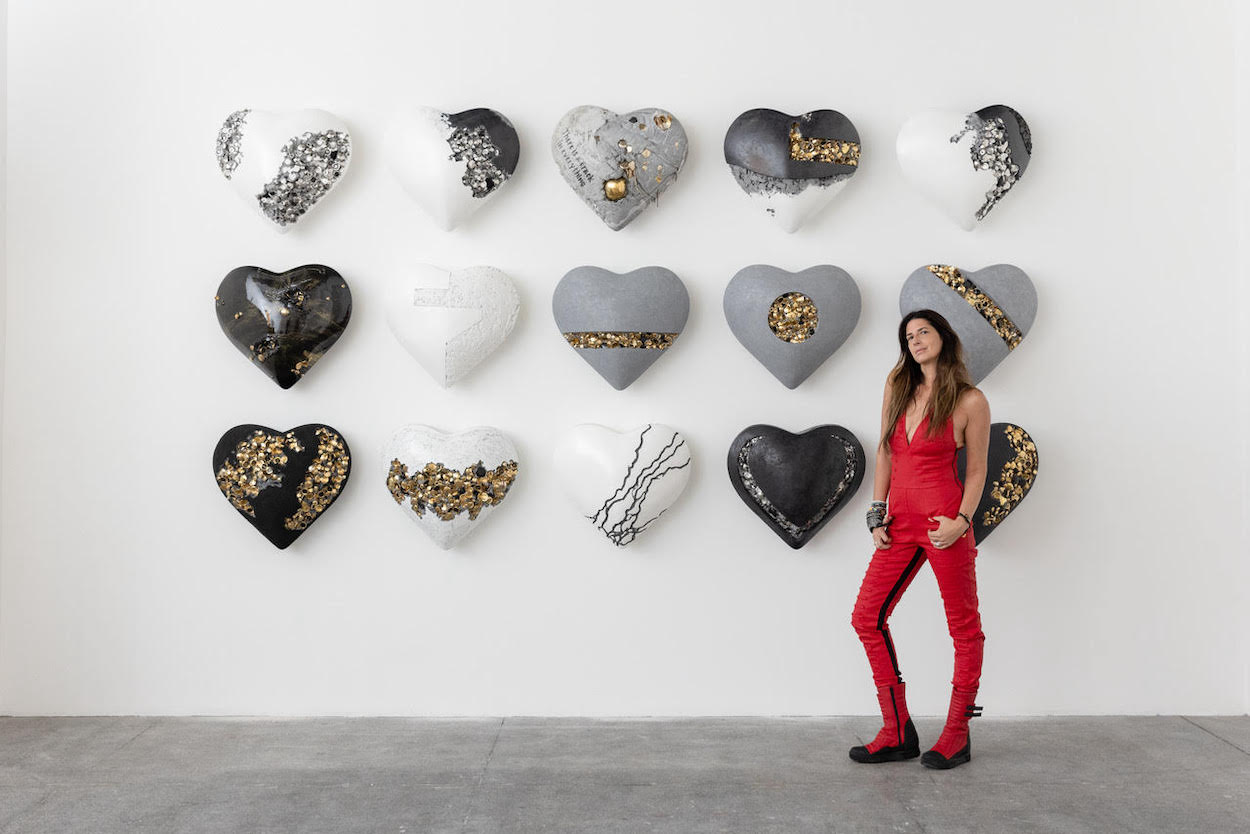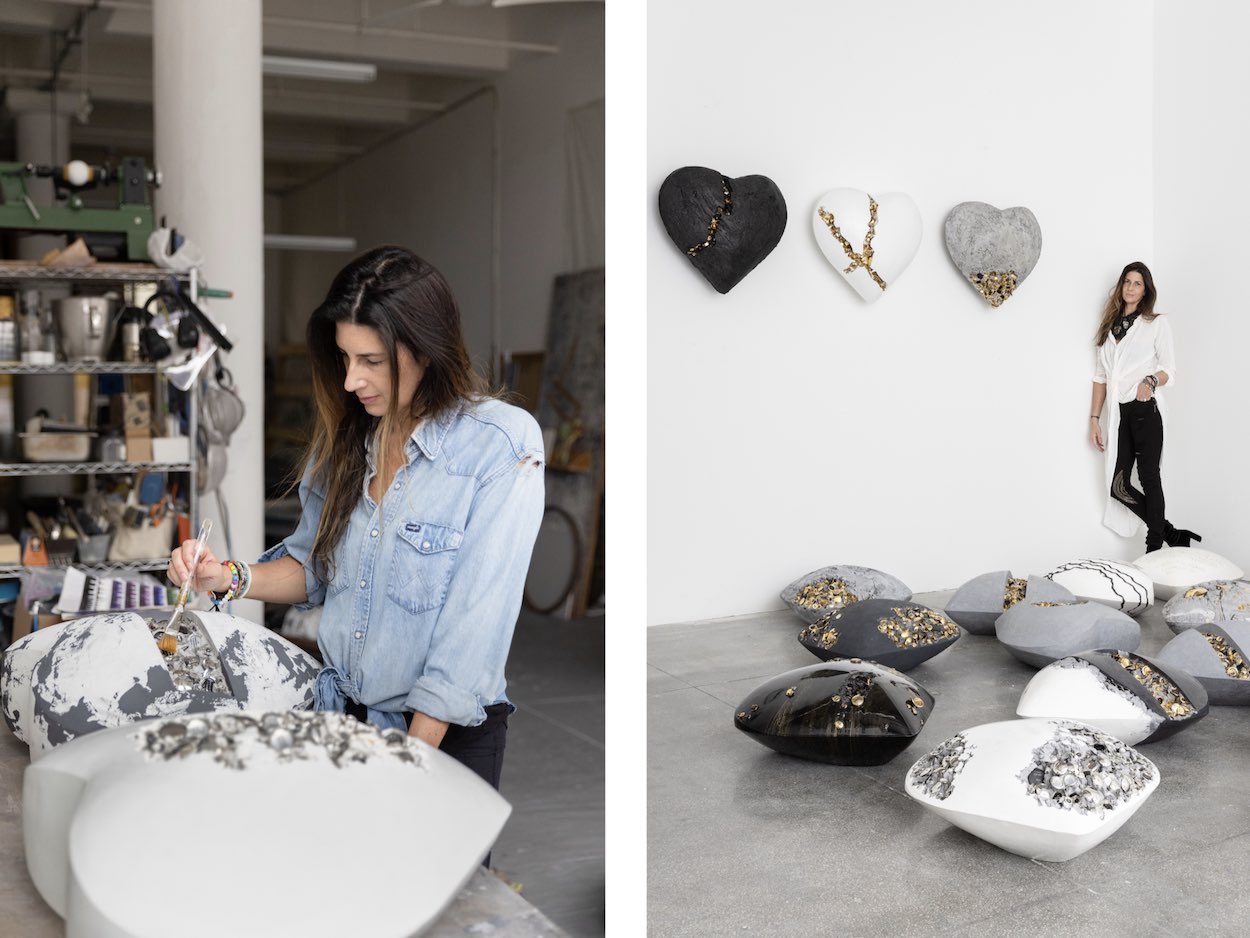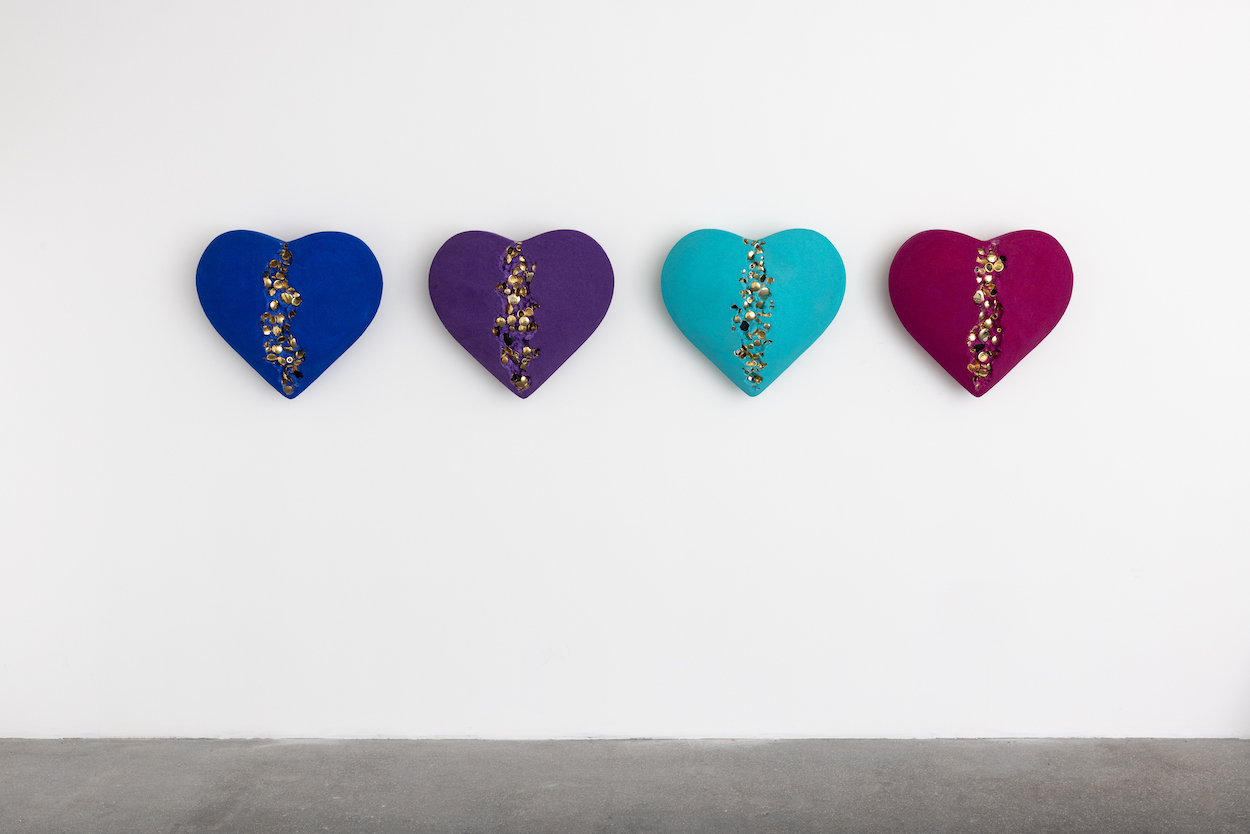When Jessica Lichtenstein decided to make hearts the subject of her latest exhibition, she knew she was walking a fine line. As a universally-understood symbol, hearts carry plenty of contextual baggage—something the artist understands all too well. “If you make too puffy of a heart it can read too Barbie or girly. If you make it too standard, it can read just like an emoji,” she tells Surface.
For Delicious Torment, her latest exhibition at Winston Wächter Seattle, the artist finds inspiration in the writings of Ralph Waldo Emerson.(The phrase ‘delicious torment’ was written by Emerson in a letter to a friend: ‘and so thou art to me a delicious torment.’). Lichtenstein’s interpretation of heart iconography is raw, emotive, and masculine: her sculptures seem ready to burst at any moment from the jagged raptures that cut across them. “I knew I wanted hard lines and minimalist edges. I thought concrete would do that. It’s a material that’s so soft to work with until it dries. I enjoyed that oxymoron.”
Engraved lockets and watches fill each of Lichtenstein’s sculptures and feature quotes she selected from poetry, newspaper snippets, social media, romance novels, pornography, and comic books. The result is like a choose-your-own-adventure narrative that evolves depending on where viewers begin to read the engravings. Lichtenstein has added four new sculptures to the body of work on display in honor of her final heart show before she retires the symbol and moves onto something new.
In her mission to challenge the cliches around hearts, Lichtenstein has thus far steered clear of vibrant hues and instead opted for a muted palette of neutral tones. For her final exhibition of hearts, she questioned whether she wanted to leave the motif behind without ever venturing beyond grayscale tones. “In thinking about this as the last heart show, I really did want to see what some of the hearts would look like in color,” she says. The four new colorways in amethyst, sapphire, magenta, and turquoise are inspired by gemstone pendants. “The pigment lets the lockets’ reflectiveness stand out, so the reader gets to see themselves reflected in each one, like a kaleidoscope,” she says.



